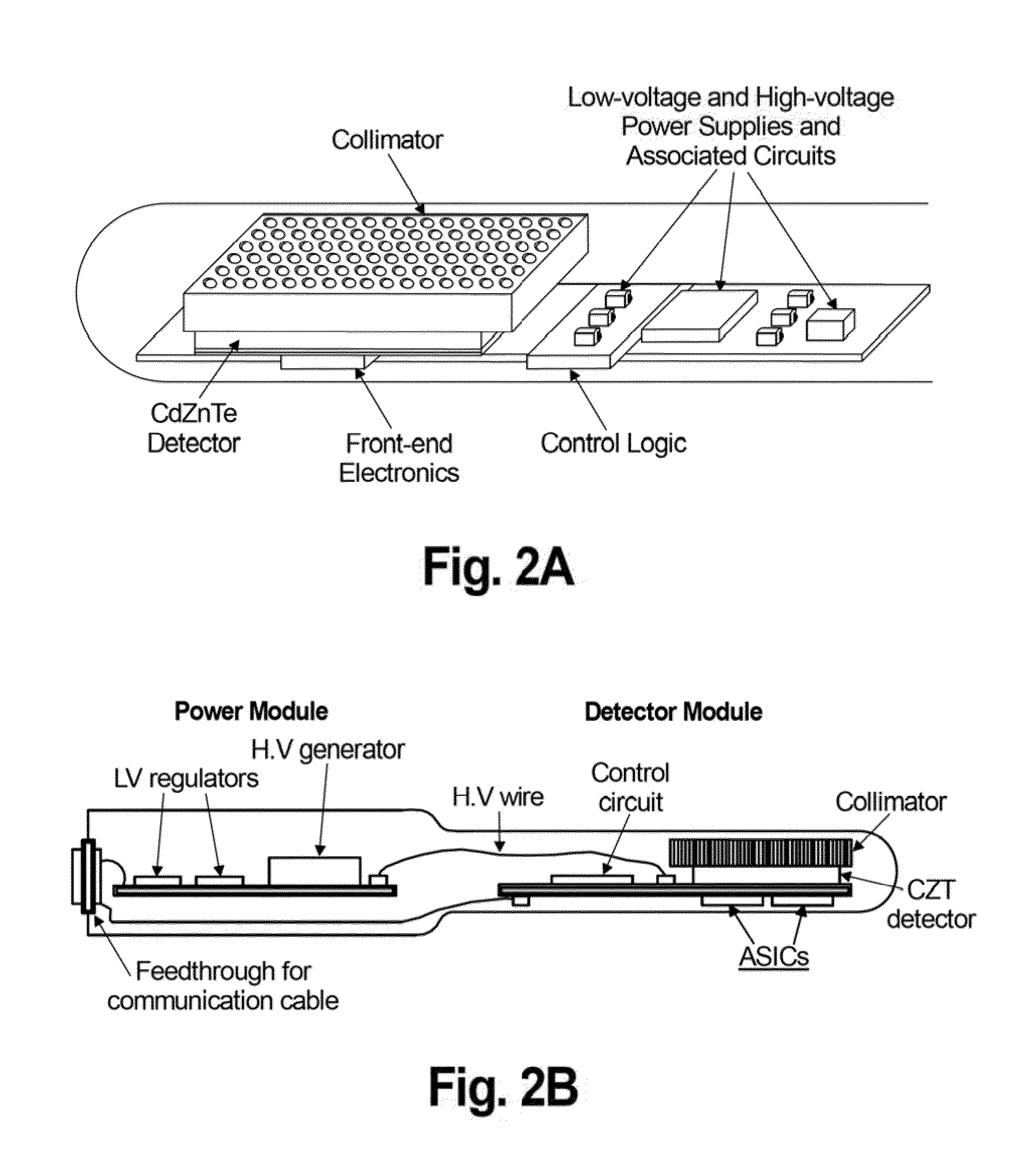Compact Endocavity Diagnostic Probes for Nuclear Radiation Detection
a diagnostic probe and nuclear radiation technology, applied in the field of radiographic imaging, can solve the problems of unsuitable functional imaging required in cancer imaging and diagnosis, benign and cancerous tumors cannot be easily distinguished by ultrasound, and the ultrasonic technology is not an ideal tool for cancer detection and diagnosis, etc., to achieve high spatial resolution, high image contrast, and high image quality
- Summary
- Abstract
- Description
- Claims
- Application Information
AI Technical Summary
Benefits of technology
Problems solved by technology
Method used
Image
Examples
Embodiment Construction
[0025]The present invention is directed to a novel radiation imaging probe that offers a compact size that is easy to carry, handle, and operate, and exhibits high energy resolution and detection efficiency. In the following detailed description of the preferred embodiments and various examples of the probe according to the present invention, reference is made to the accompanying drawings where like reference numerals refer to like parts. The drawings illustrate various embodiments in which a hybrid probe for radiation imaging applications may be practiced. It is to be understood, however, that those skilled in the art may develop other structural and functional modifications without significantly departing from the scope of the instant disclosure.
[0026]FIG. 2A and FIG. 2B illustrate two embodiments of the radiation imaging probe of the present invention. The probe is encapsulated within a tube (sheath or sleeve) and includes a detector module and a collimator. The collimator is fab...
PUM
 Login to View More
Login to View More Abstract
Description
Claims
Application Information
 Login to View More
Login to View More - R&D
- Intellectual Property
- Life Sciences
- Materials
- Tech Scout
- Unparalleled Data Quality
- Higher Quality Content
- 60% Fewer Hallucinations
Browse by: Latest US Patents, China's latest patents, Technical Efficacy Thesaurus, Application Domain, Technology Topic, Popular Technical Reports.
© 2025 PatSnap. All rights reserved.Legal|Privacy policy|Modern Slavery Act Transparency Statement|Sitemap|About US| Contact US: help@patsnap.com



